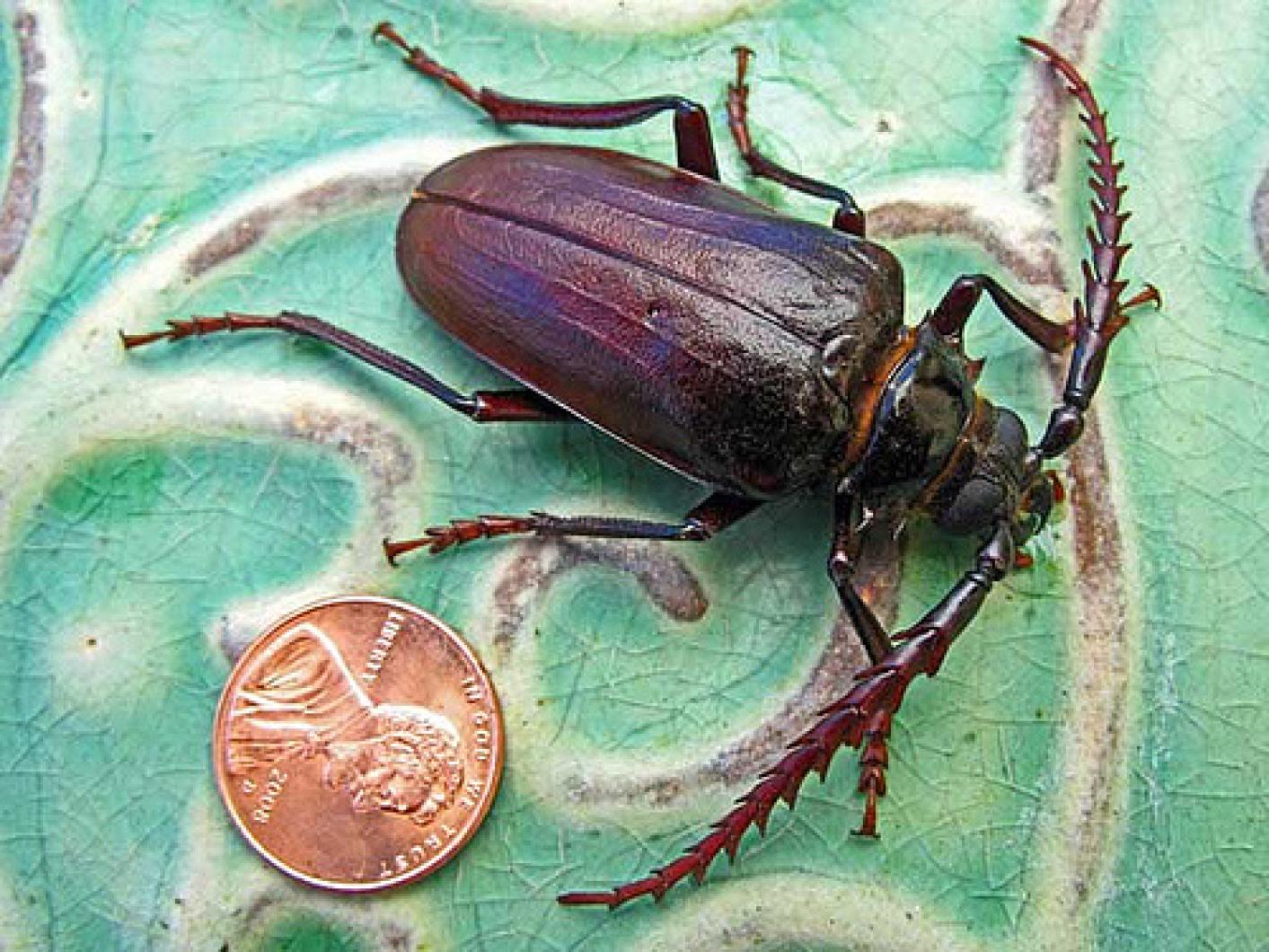West Chop has been invaded.
It is not the Harley Riders, the East Chop militia, or a plague of locusts that is shattering the peace on the Island’s northwest peninsula, but some residents there may have some big trouble.
Big is the word to describe the insect that is raising a ruckus in the Stinson household on West Chop. The Stinson family is known for their well maintained yard. Dad and Harmon Stinson keep a tight ship out there, and do not look kindly on pests or other uninvited garden guests. The big beasts found last week crawling on their lawn will thus cause some concern.
The insect in question is a beetle of epic proportions. At up to three inches, the Prionus beetle is one of the largest beetles that we find in our neck of the woods. At press time, at least three giant beetles were found on the Stinsons’ lawn, and if these beetles behave as expected more will come.
To get to the root of the problem, one must dig deep. Within the soil and tree roots is where the Prionus spends most of its time. Known as a tile-horned, long horned, or California root borer, the Prionus beetle is evidence of trouble below the surface.
The larva or grub of the Prionus subsists in the roots of hardwood and fruit trees, with oaks being a favorite. For three to five years they will dwell down below (six to eight inches deep) and hollow out and weaken the roots of their woody victims. Above ground the damage will not be especially evident. Sometimes a tree will look weak or lose some leaves, but confirming the Prionus as the culprit can be difficult.
The beetles that result from the metamorphosis of these grounded grubs will only live for a short season, but can produce hundreds of eggs to supply the next generation of tree tormentors. Eggs are laid in the soil and will hatch into those root-destroying grubs before long.
Beetles are a hearty bunch and numerous, claiming to be the largest order of insects with over 370,000 species named. The genesis of the name comes from the old English word “bitela,” meaning “to bite” and the word beetle literally means “the little biter.” In the case of the tile-horned Prionus, the big biter might be more apropos. If you meet this insect, note the large mandibles, necessary to bore their way out of the tree roots.
Dad Stinson may be disheartened (and his confidence, like his trees, might be undermined) to hear that control of these insects is difficult, and pesticides often don’t work; nor will he know whether he has a full-blown infestation or just a few big biters. At this point all that he can do is try to weather the beetle brethren as best he can and curse them as the ‘root’ of all evil.
Suzan Bellincampi is director of the Felix Neck Wildlife Sanctuary in Edgartown.




Comments (1)
Comments
Comment policy »